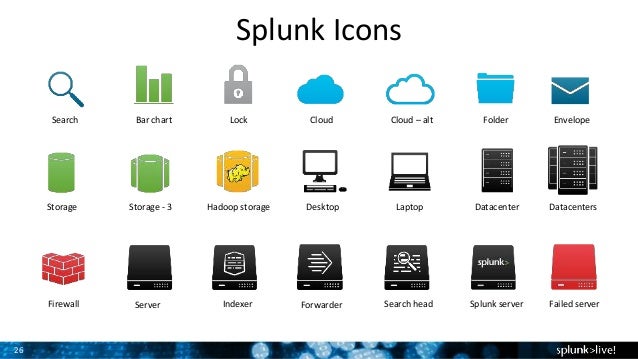
- #Splunk universal forwarder icon install#
- #Splunk universal forwarder icon full#
- #Splunk universal forwarder icon license#
Additionally, you can configure the universal forwarder to start at boot time.When you do, the forwarder first stops itself, then starts itself again. If you want to restart the forwarder after you make a configuration change, run this command.
#Splunk universal forwarder icon license#

#Splunk universal forwarder icon full#
To restart the universal forwarder, use the same CLI restart command that you use to restart a full Splunk Enterprise instance: Some configuration changes might require that you restart the forwarder. Also, if you make changes to the universal forwarder, you must start or restart it:
#Splunk universal forwarder icon install#
The next step is to configure the types of events you want to collect.įor more information, please see Configure Splunk Universal Forwarder.After you install the universal forwarder, you must start it. Click Install to complete the installation.Splunk receiving indexers receive events from multiple endpoints. Enter details about the Splunk Receiving Indexer here.Splunk deployment servers distribute configurations, applications, and content to groups of Splunk Enterprise instances. Enter details about the Splunk Deployment Server here.You must configure either a Deployment Server or a Receiving Indexer as a minimum to send events to Splunk Enterprise. In the next section you can choose to configure the Deployment Server and Receiving Indexer. If installing the Splunk Universal Forwarder on the Windows Event Collector node, check the Forwarded Events box to send all the forwarded events to Splunk Enterprise.Splunk only needs to see events from that machine, rather than remotely. If installing the Splunk Universal Forwarder on the endpoint, leave the default as Local System.Please follow the instructions to do this. Click Next.




 0 kommentar(er)
0 kommentar(er)
